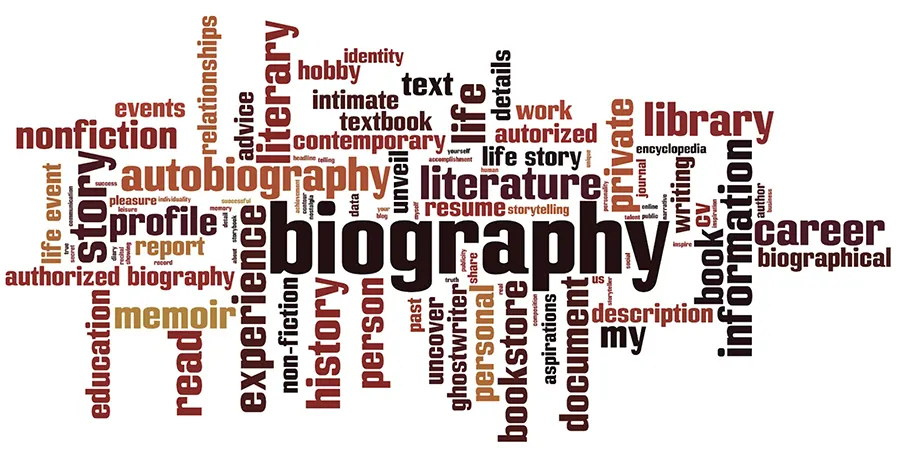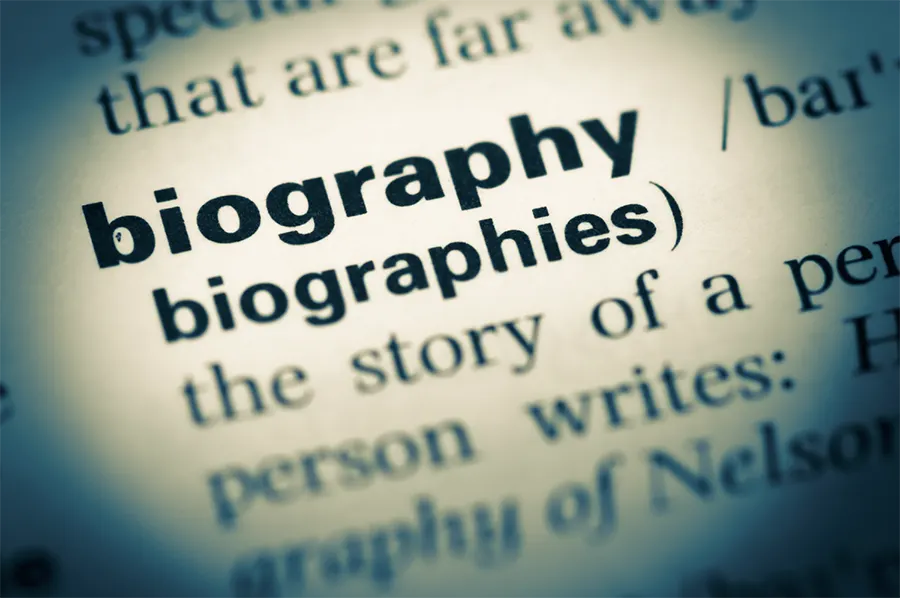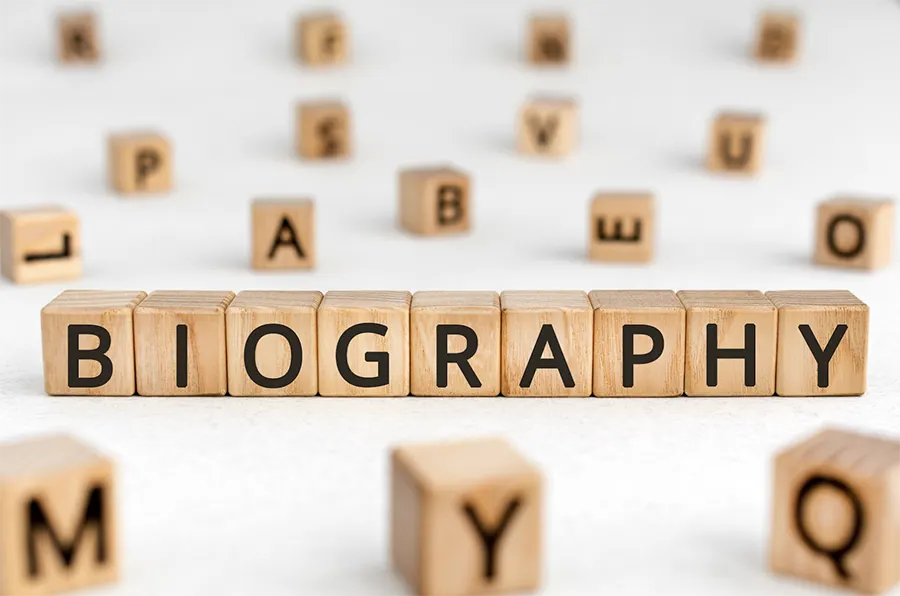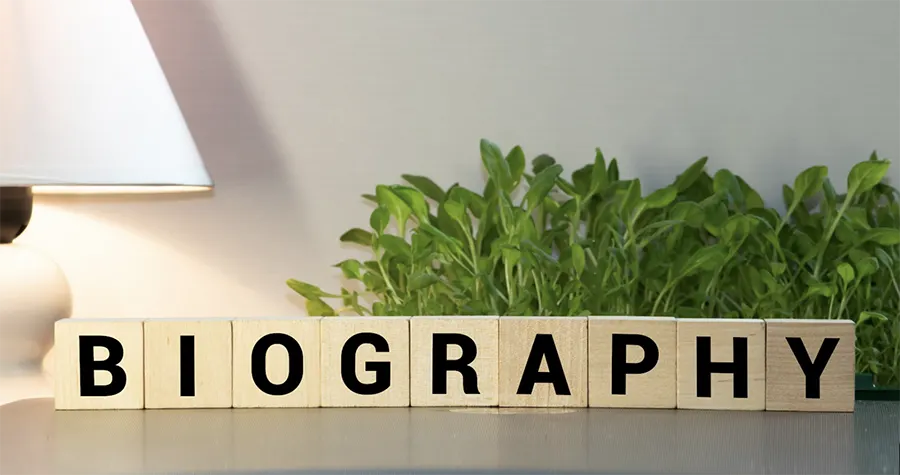THE STORY OF MY LIFE
Using Biographies to Enhance and Extend Instruction
Introduction | Background Knowledge | Activities | Extensions | Standards

Introduction
Biographies are crucial for a successful education. This genre has influenced the world. Without Ron Chernow’s biography, Alexander Hamilton, Lin-Manuel Miranda would not have had the inspiration to change the world with the wildly popular musical Hamilton. Without My Story by Rosa Parks, many students would continue to believe that Rosa was an older woman, tired from a long day. Without Pies from Nowhere or Sweet Justice, people would not know about Georgia Gilmore, the woman who fed the Montgomery Bus Boycott.

Background Knowledge
A biography is a book written about someone's life. A subset of the biography genre is an autobiography, a book someone writes about their life. Biographies can be expository, where facts are presented clearly and logically, or literary or narrative nonfiction, where the facts are given in a narrative or story format.
Dr. Rudine Sims Bishop says books should serve as “windows, mirrors, and sliding glass doors” for students. Books as windows allow students to see into the lives and realities of others. Books as mirrors enable students to see their own lives and realities reflected in those of others. Books as sliding glass doors allow students to become immersed in the lives and realities of others and empathetic for the challenges they face. While this analogy was intended for children’s literature, biographies can be an excellent way to promote diversity, honor many cultures and experiences, and encourage empathy. Biographies can also teach students about themselves and where they can fit into the larger world.

Activities
-
Selected list of picture book biographies and book lists:
- Hidden Powers: Lise Meitner’s Call to Science by Jeannine Atkins (ISBN 978-1665902502) - Learn how Lise Meitner helped discover nuclear fission but never got the credit for her work.
- Ida B Wells, Voice of Truth: Educator, Feminist, and Anti-Lynching Civil Rights Leader by Michelle Duster (ISBN 978-1250239464) - Ida B. Wells’s great-grandaughter tells her story.
- Forest Fighter: The Story of Chico Mendes by Anita Ganeri (ISBN 978-1623718565) - Chico Mendes became a champion and spokesperson for the Amazon Rainforest.
- Maya’s Song by Renee Watson (ISBN 978-0062871589) - This book uses poetry to tell the story of the famed poet Maya Angelou.
- The Oldest Student: How Mary Walker Learned to Read by Rita Lorraine Hubbard (ISBN 978-1524768287) - Mary Walker’s life began during the Civil War and ended over 100 years later during the battle for Civil Rights. At 116 years old, she learned to read.
- 20 of the Best Biography Books for Kids
- 100+ Beautiful Biographies
-
Have students complete a Body Biographies project after reading a biography or biography set.
- Create an interactive display with the students’ completed projects using Flip's augmented reality (AR) feature (TeachersFirst review) to add QR codes for student videos discussing their body project. Learn more about creating and sharing Flip QR codes in this article at The Library Voice.
-
Identify the essential things about the person in the biography.
- Set the stage by reading The Important Book by Margaret Wise Brown (ISBN 978-0064432276).
- Read a biography. (Try Only Margaret: A Story about Margaret Wise Brown by Candice Ransom (ISBN 978-0802855084).)
- Learn more about the person through further research. (Check out the Literary Ladies Guild article on Margaret Wise Brown (TeachersFirst review).
- Use Frayer Models to help students identify important information about the subject of a biography. Edit this Google Slide template to include categories for exciting details, examples of things the person did, the impact of their contributions, and important dates.
-
Students can write the critical “thing” they learned from the biography. (Use the sentence frame: The important thing about _________ is that they are ________.)
- Use a slide creator to make a class book. (Google Slides (TeachersFirst review) and Slides (TeachersFirst review) are excellent choices for slide presentations.)
- ReadWriteThink (TeachersFirst review) shares many lessons and resources for teaching biographies. Examples include Writers’ Workshop: The Biographical Sketch for third through fifth grade and an interactive Cube creation tool (TeachersFirst review) with specific prompts to guide students in developing a biographical outline.
- TeachersFirst has over 90 resources about biographies for teachers to use

Extensions
-
Living Wax Museum
- After reading multiple biographies and teaching a few basic research skills, invite students to choose their own famous person to learn more about. As a culminating activity, students can present a Living Wax Museum. If a physical living wax museum is impossible, consider using Blabberize (TeachersFirst review) to record their short (about 30-second) presentations.
- After the Wax Museum, invite students to stay in character for a dinner party activity. Group students into teams and have them interact as their biography subjects.
- Take advantage of these suggestions for 50 Mini-Lessons for Teaching Students Research Skills (TeachersFirst review) to guide students as they conduct their research and prepare biography presentations.
-
You Be the Biographer
- Students interview someone they know - a classmate or family member - and create a biographical presentation about the person. Consider giving students a choice of how to share about their subject. They can write a paper or share information through a Timeline (TeachersFirst review). Or, students can try a Free Template to make a brochure or newspaper article (TeachersFirst review).

Correlation to Standards
-
AASL National School Library Standards
- Inquire Shared Foundation, Think Domain - Learners display curiosity and initiative by: 1. Formulating questions about a personal interest or a curricular topic. 2. Recalling prior and background knowledge as context for new meaning
- Inquire Shared Foundation, Share Domain - Learners adapt, communicate, and exchange learning products with others in a cycle that includes: 1. Interacting with content presented by others. 2. Providing constructive feedback. 3. Acting on feedback to improve. 4. Sharing products with an authentic audience.
- Include Shared Foundation, Share Domain - Learners exhibit empathy with and tolerance for diverse ideas by: 1. Engaging in informed conversation and active debate. 2. Contributing to discussions in which multiple viewpoints on a topic are expressed.
- Include Shared Foundation, Grow Domain - Learners demonstrate empathy and equity in knowledge building within the global learning community by: 1. Seeking interactions with a range of learners.
- Collaborate Shared Foundation, Think Domain - Learners identify collaborative opportunities by: 1. Demonstrating their desire to broaden and deepen understandings. 2. Developing new understandings through engagement in a learning group. 3. Deciding to solve problems informed by group interaction.
- Collaborate Shared Foundation, Create Domain - s Learners participate in personal, social, and intellectual networks by: 1. Using a variety of communication tools and resources. 2. Establishing connections with other learners to build on their own prior knowledge and create new knowledge.
- Collaborate Shared Foundation, Grow Domain - Learners actively participate with others in learning situations by: 2. Recognizing learning as a social responsibility.
- Explore Shared Foundation, Think Domain - Learners develop and satisfy personal curiosity by: 1. Reading widely and deeply in multiple formats and writing and creating for a variety of purposes.
- Explore Shared Foundation, Create Domain - Learners construct new knowledge by: 1. Problem solving through cycles of design, implementation, and reflection.
- Explore Shared Foundation, Share Domain - Learners engage with the learning community by: 3. Collaboratively identifying innovative solutions to a challenge or problem.
- Explore Shared Foundation, Grow Domain - Learners develop through experience and reflection by: 1. Iteratively responding to challenges. 2. Recognizing capabilities and skills that can be developed, improved, and expanded. 3. Open-mindedly accepting feedback for positive and constructive growth.
-
ISTE Standards for Students
- Empowered Learner - 1b. Students build networks and customize their learning environments in ways that support the learning process. 1c. Students use technology to seek feedback that informs and improves their practice and to demonstrate their learning in a variety of ways.
- Knowledge Constructor - 3d. Students build knowledge by actively exploring real-world issues and problems, developing ideas and theories, and pursuing answers and solutions.
- Innovative Designer - 4d. Students exhibit a tolerance for ambiguity, perseverance, and the capacity to work with open-ended problems.
- Global Collaborator - 7c. Students contribute constructively to project teams, assuming various roles and responsibilities to work effectively toward a common goal.
